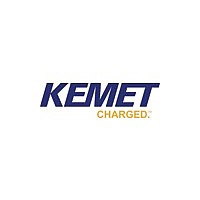M39006/22-0345H Kemet, M39006/22-0345H Datasheet - Page 5

M39006/22-0345H
Manufacturer Part Number
M39006/22-0345H
Description
Manufacturer
Kemet
Datasheet
1.M3900622-0345H.pdf
(28 pages)
Specifications of M39006/22-0345H
Tolerance (+ Or -)
10%
Voltage
50VDC
Mounting Style
Through Hole
Operating Temp Range
-55C to 125C
Esr
5.31Ohm
Construction
Axial
Df
4%
Dcl
1uA
Seal
Hermetic
Insulation
Sleeved
Polarity
Polar
Failure Rate
P
Product Length (mm)
12.5mm
Product Depth (mm)
Not Requiredmm
Product Height (mm)
Not Requiredmm
Product Diameter (mm)
5.56mm
Capacitance
10uF
Lead Free Status / RoHS Status
Supplier Unconfirmed
11. Reverse Voltage
applied in the reverse polarity direction for 125 hours ±
10 hours, capacitors shall meet the following require-
ments.
12. Equivalent Series Resistance (ESR)
ferred high-frequency statement of the resistance
unavoidably appearing in these capacitors. ESR
decreases with increasing frequency. Typical ESR lim-
its are established in each specific product series.
However, the ESR limits provided are for reference
only, and are not necessarily the actual value that a
particular Series product will attain.
of capacitive reactance (X
nance; above resonance total impedance is the vector
sum of inductive reactance (X
To understand the many elements of a capacitor, see
Figure 5.
where:
f = frequency, Hertz
C = capacitance, Farad
where:
f = frequency, Hertz
C = capacitance, Farad
Figure 4a: Total Impedance of the Capacitor Below Resonance
Figure 4b: Total Impedance of the Capacitor Above Resonance
X c =
X
L
= 2πfL
4. Capacitors show no visible mechanical damage
When subjected to a DC potential of 3 volts,
- DC Leakage: shall not exceed 1.25 times initial
- Capacitance: shall be within stated tolerance
- Dissipation Factor: shall not exceed initial limit
Equivalent Series Resistance (ESR) is the pre-
Total impedance of the capacitor is the vector sum
1ohm
or leakage of electrolyte.
limit
(K- ±10%, M- ±20%, J- ±5%)
2πfC
© KEMET Electronics Corporation, P.O. Box 5928, Greenville, SC 29606 (864) 963-6300
c
) and ESR, below reso-
L
) and ESR. See Figure 4.
Figure 5. The Real Capacitor
many series and parallel elements, each adding to the
complexity of the measurement system.
according to its equation above. There is unavoidable
inductance as well as resistance in all capacitors, and
at some point in frequency, the reactance ceases to be
capacitive and becomes inductive. This frequency is
called the self-resonant point. In wet tantalum capaci-
tors, the resonance is damped by the ESR, and a
smooth, rather than abrupt, transition from capacitive to
inductive reactance (XL = 2πfL) follows.
inductive above the self-resonance, these capacitors
find use as decoupling devices up to 10MHz.
100 kHz, ESR decreases with increasing temperature.
The amount of change is influenced by the size of the
capacitance and is generally more pronounced on
smaller ratings.
A capacitor is a complex impedance consisting of
ESL – Represents lead wire and construction
inductance. In most instances (especially in
tantalum and monolithic ceramic capacitors) it is
insignificant at the basic measurement frequen-
cies of 120 and 1000 Hz.
ESR – Represents the actual ohmic series resist-
ance in series with the capacitance. Lead wires
and capacitor electrodes are contributing sources.
RL – Capacitor Leakage Resistance. Typically it
can reach 50,000 megohms in a tantalum capaci-
tor. It can exceed 10
ics and in film capacitors.
Rd – The dielectric loss contributed by dielectric
absorption and molecular polarization. It becomes
very significant in high frequency measurements
and applications. Its value varies with frequency.
Cd – The inherent dielectric absorption of the
solid tantalum capacitor which typically equates to
1-2% of the applied voltage.
As frequency increases, X
Despite the fact that the reactance is nearly all
ESR and Z are also affected by temperature. At
Performance Characteristics
12
ohms in monolithic ceram-
c
continues to decrease
5













